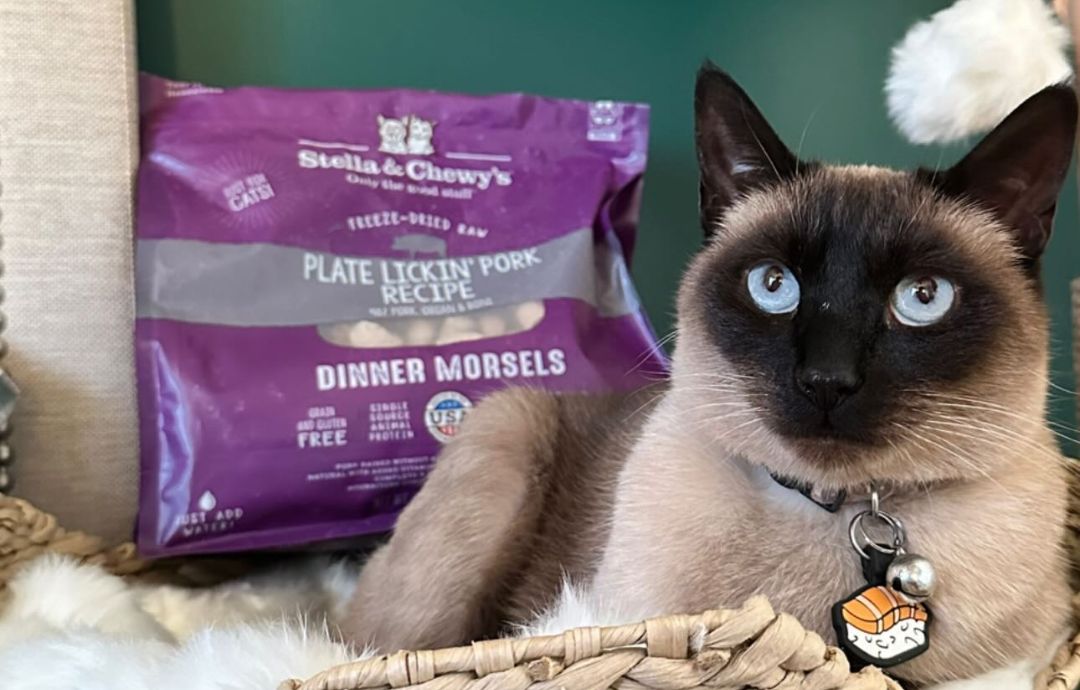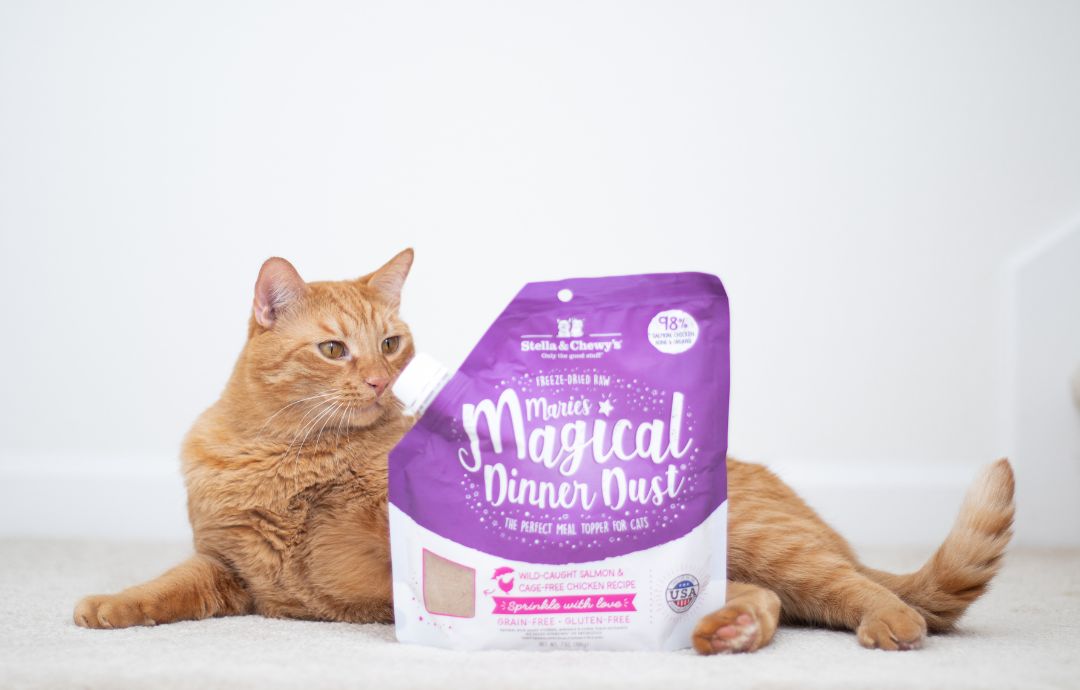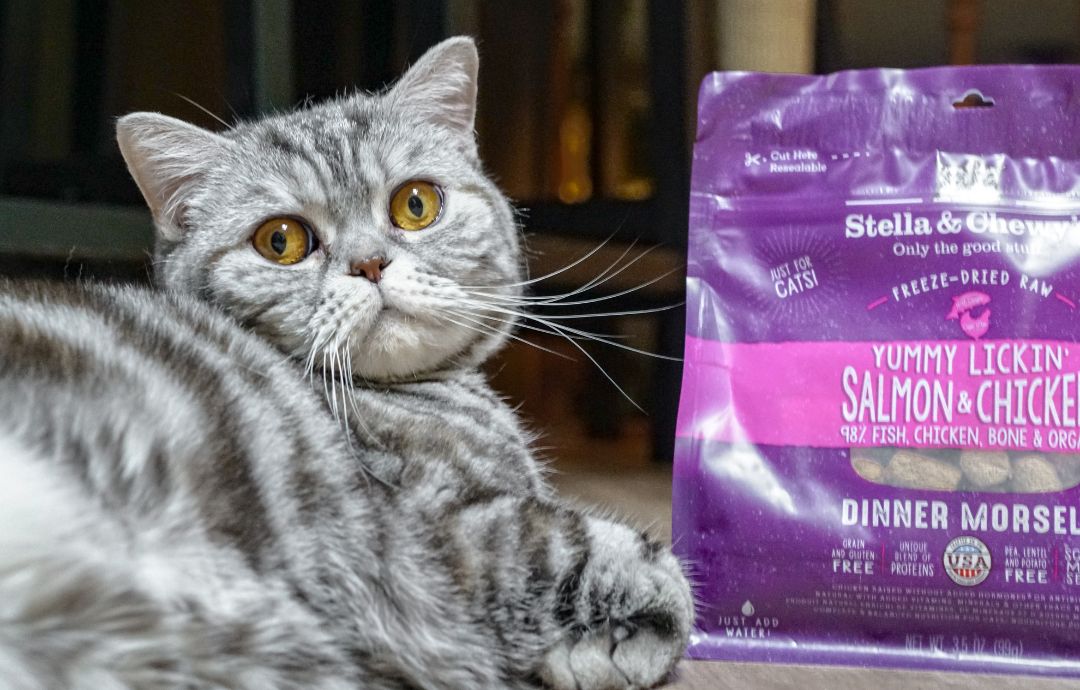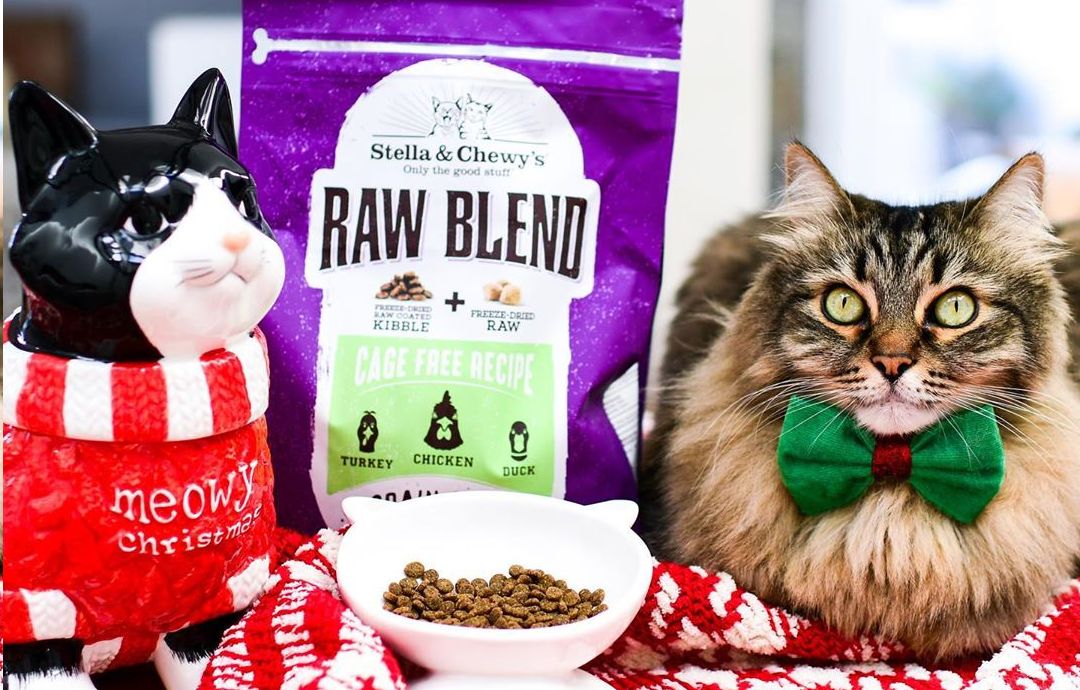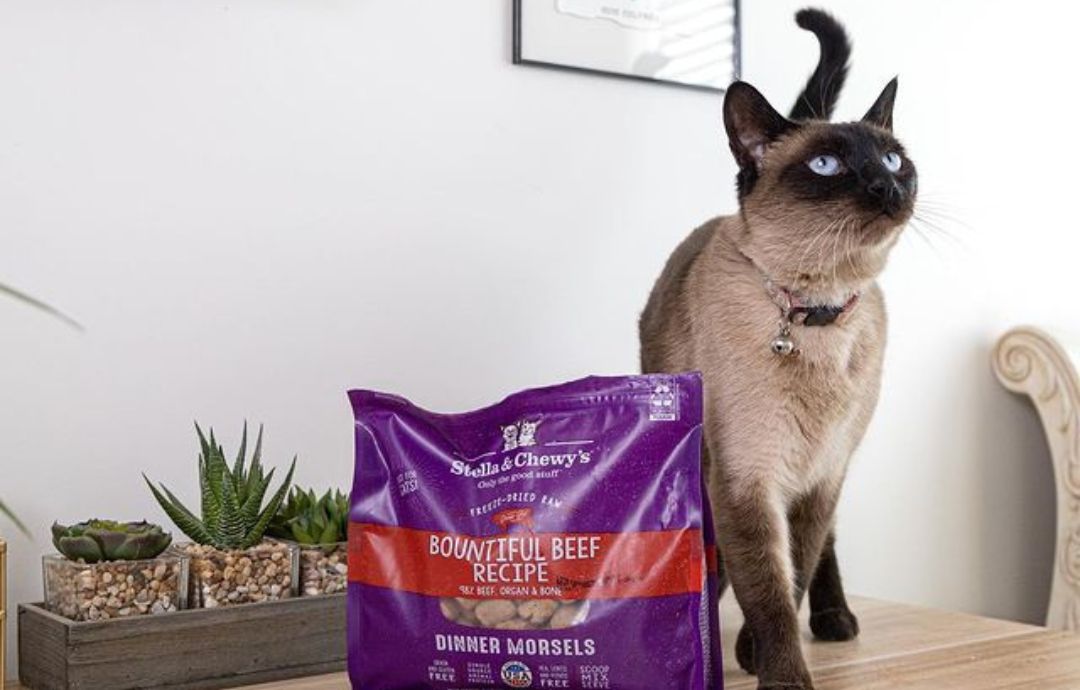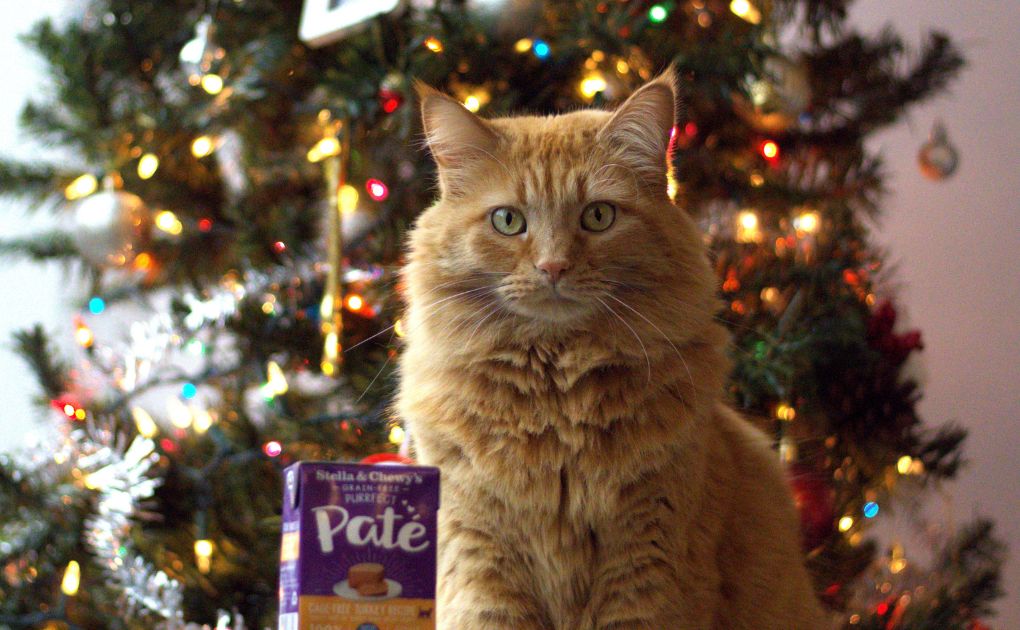
Cats are notorious for getting into trouble with Christmas trees! Cats are naturally curious, and a real or artificial tree decorated with shiny objects is just the thing they want to investigate… and climb, and chew on, and possibly attack. Figuring out how to keep your cat away from the Christmas tree is more than an annoyance – traditional Christmas trees can pose a real danger to cats. Luckily, there are simple ways cat parents can enjoy the tradition of having a tree for Christmas while keeping their cat safe.
TRY THESE TIPS TO KEEP YOUR CAT OUT OF THE CHRISTMAS TREE
Christmas trees can pose a variety of dangers to cats: trees can tip over, a cat can get tangled in the string lights, some ornaments pose a choking hazard, and pine oil is toxic to cats if ingested. If you know your cat will cause trouble with the tree, or if you’re not sure how your cat or kitten will react to having a Christmas tree in the home, use these precautions to put safety first so you can all enjoy the holidays together.
SECURE THE CHRISTMAS TREE
Make sure you have strong and steady support for your tree. A stable base is less likely to tip over if your cat manages to climb it – look for a heavy tree stand or mount your tree stand to a board to secure it. Also consider using a wire near the top to anchor your tree to the wall. If your cat loves to climb, you might want to get a smaller tree – it’ll make less work for you, and be safer for your cat in case they do manage to bring it down.
Delay Decorating
After setting up your tree, don’t decorate it right away. Just having a tree in the house is a big event from your cat’s point of view! Let them get used to it (and hopefully a bit bored with it) before adding lights and ornaments.
Get Your Cat an Early Christmas Gift
Distract your cat from a tempting tree by pulling out their favorite toy or getting them a new one. Keep a scratching post in the same room (away from the tree) and sprinkle it with catnip to make it more enticing. If you’ve bought other Christmas presents for your cat (especially toys with catnip) don’t put them under the tree where your cat will sniff them out.
Keep Your Cat Busy
Make sure to give your cat plenty of playtime and enrichment, even if your schedule feels busier than ever. A bored cat with energy to burn is much more likely to cause mischief. When you notice your cat behaving (or about to behave) unsafely around the tree, use a wand or teaser toy to lure them away. Reward them with a treat and some playtime after they move away from the tree. For bonus points, use a clicker and a verbal command to cement the training. You can learn more about clicker training for cats in this article.
COVER THE WATER
Attach a piece of cardboard over the water basin to prevent your cat from drinking the Christmas tree water. The stagnant water can contain harmful bacteria, and any water additives used to extend your tree’s freshness are also harmful to pets.
Prevent Pine Poisoning
Pine oil is toxic to cats, and your cat may accidentally eat pine sap if it gets on their coat while climbing. Pine needles can also puncture a cat’s internal organs if eaten. Sweep or vacuum often and keep your cat away from the boughs. If your cat is prone to chewing or eating plants, you might be better off getting an artificial tree.
TRY A REPELLENT
Spray repellents made with citrus or citronella are often distasteful to cats. Some people also have success with putting fresh lemon or orange peels around the base of the Christmas tree (they will need to be replaced every few days.) If you use a repellent, make sure it’s focused on the tree—don’t just spray it around the room. You can also put repellent on a rag before applying to specific surfaces.
Some cat parents spray pine cones with citrus scent and place them around the base of the tree. While this doesn’t always work with all cats, it may be worth a try.
As a cat parent you probably have a good idea of what your cat loves and hates – if your cat runs away from the vacuum or hates the smell of a certain candle, put them by the tree to discourage your cat from getting too close.
WRAP THE BASE
Wrap the base of the tree trunk and the entire tree stand with aluminum foil. Most cats don’t like the sound or feel of foil, so it may deter them from trying to climb up from underneath.
WRAP THE LIGHTS
Your cat may try to play with dangling wires or cords. Wrap lights fairly tightly around branches and the trunk so they don’t hang, and use pet-proof cord covers on the cords that run from the tree to the outlet. Battery-operated LED string lights can help reduce the amount of exposed cords around the tree.
No matter which kind of Christmas tree lights you choose, always unplug or turn them off when your cat’s home alone with the tree. If your cat chews on electric cords while plugged in they could be burned or electrocuted. You can also opt for a pre-lit artificial tree so you don’t have to worry about wires.
Place Ornaments THOUGHTFULLY
Don’t hang your breakable, sparkly ornaments on the lower boughs—that’s too much temptation for most cats! You may even want to consider not putting any ornaments on the lowest branches. Avoid ornaments that are similar to any of your cat’s toys (like decorations with feathers), animated ornaments, and small ornaments (or those with small parts) that could be a choking hazard. Use wire to fasten ornaments securely to branches so they can’t be swatted down, and don’t decorate the tree with anything edible.
Skip the Tinsel & Artificial Snow
Tinsel is a serious hazard for cats because it can cause blockages if swallowed – keep tinsel completely inaccessible or skip it (try paper garland instead). Angel hair is white, gold or iridescent tinsel with very thin strands. Older types of angel hair were made from fiberglass, which is dangerous for anyone who touches it – cats and humans alike! Newer types are made from plastic, but can still be dangerous for your cat if ingested.
Christmas tree flocking (artificial spray snow in a can) can be toxic to cats if ingested, so it’s best to avoid spraying it on your tree unless you can keep your cat completely away from the area. If you love the look, an artificial tree with a snow-covered look is your best bet.
Add Jingle Bells
Put some jingle bells on the ends of branches so you can hear when your cat is prowling around the tree.
Choose a Safe LOCATION
Put your Christmas tree in the corner or a location away from furniture that could serve as a launching pad for your cat to jump into the tree. Sometimes a simple barrier like an indoor cat fence or baby gate can keep your cat away from the tree.
Ideally, the Christmas tree would be set up in a room the cat can’t get into when you’re not around. If you have a balcony, a three seasons room, or a patio/deck that you can see from indoors, consider setting your tree up outside so you can enjoy the view with peace of mind.
Why Do Cats Like Christmas Trees So Much?
Each cat is unique, and not all of them have an obsession with Christmas trees. Some cat parents find that their cat simply doesn’t fixate on it – so if it’s your first Christmas as a cat parent you can cross your fingers! Anecdotally, cats with regular access to the outdoors and senior cats tend to show less interest in Christmas trees.
But cats are naturally curious, and most indoor cats will be drawn to a Christmas tree for two main reasons. First, because it’s in a cat’s natural instincts to climb trees and secure a view from higher up, and second, because dangling, sparkly Christmas tree ornaments can look like prey or cat toys.
Cat Training Tips for Christmas Tree Safety
Training your cat to steer clear of the Christmas tree works like any other type of cat training: positive reinforcement is the way to go, and consistency is key.
Never punish your cat for bad behavior. Your cat won’t learn what you want it to do, and punishment can teach your cat to fear or avoid you.
Get a clicker, a clicky pen, or an app. When your cat does what you want (in this case, leave the tree alone), make the clicking sound and follow it up with their favorite treat. A treat could also be a small amount of their favorite wet food with Magical Dinner Dust, or a small piece of a cat-safe safe human food your cat loves.
Pay attention and act quickly. Cats are very much “in the moment.” If the click and the reward don’t happen immediately, your cat won’t make the connection.
Withhold treats unless they’re a reward for the desired behavior. And if your clever cat is earning lots of training treats, adjust their daily food intake to account for the extra calories.
Now that you know how to cat-proof your Christmas tree, learn more about keeping your pets safe during the holidays!
GET $3 OFF, INSIDER OFFERS, AND HELPFUL PET CARE TIPS.
By entering your information, you are opting in to receive communication from Stella & Chewy's

